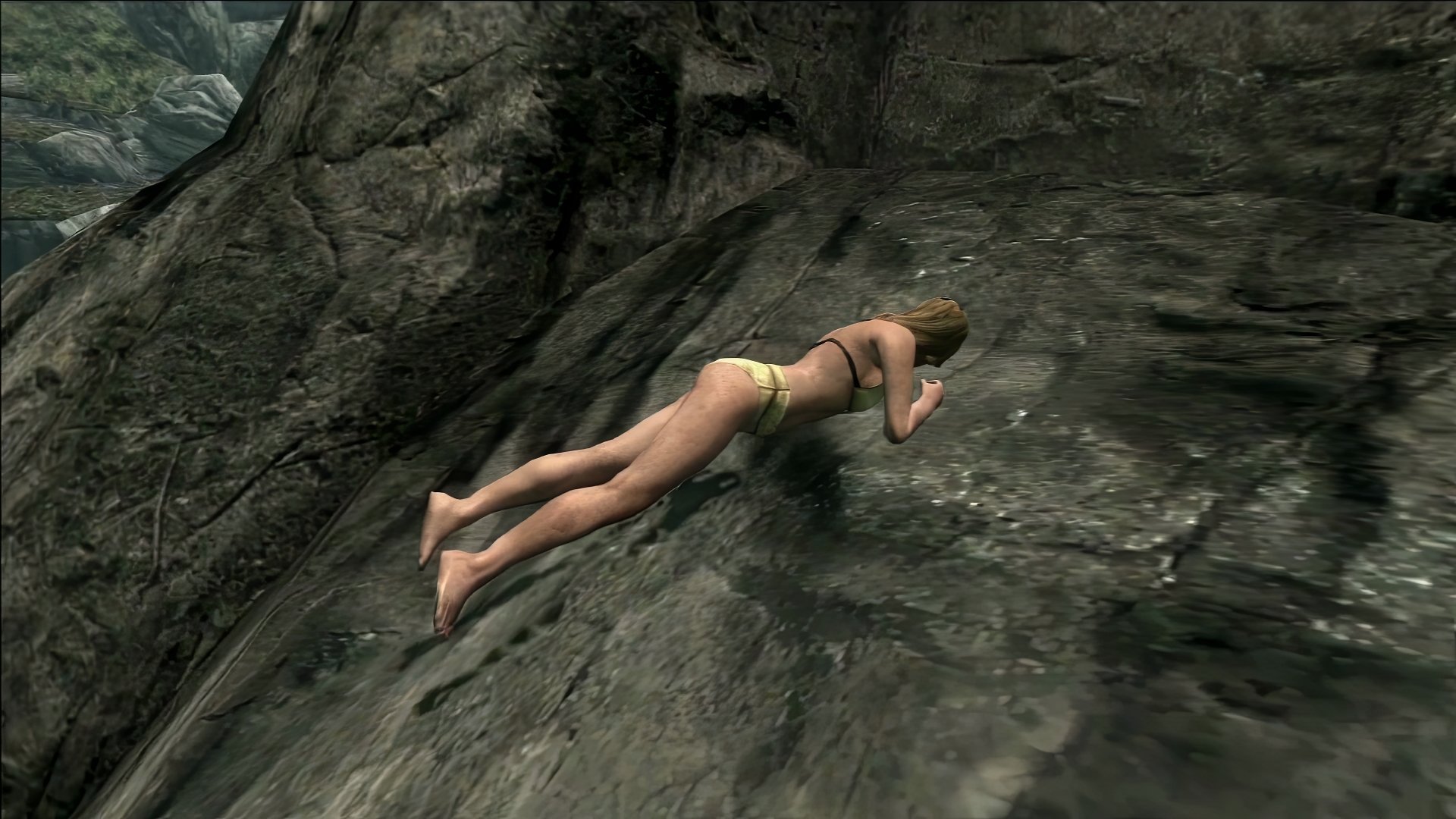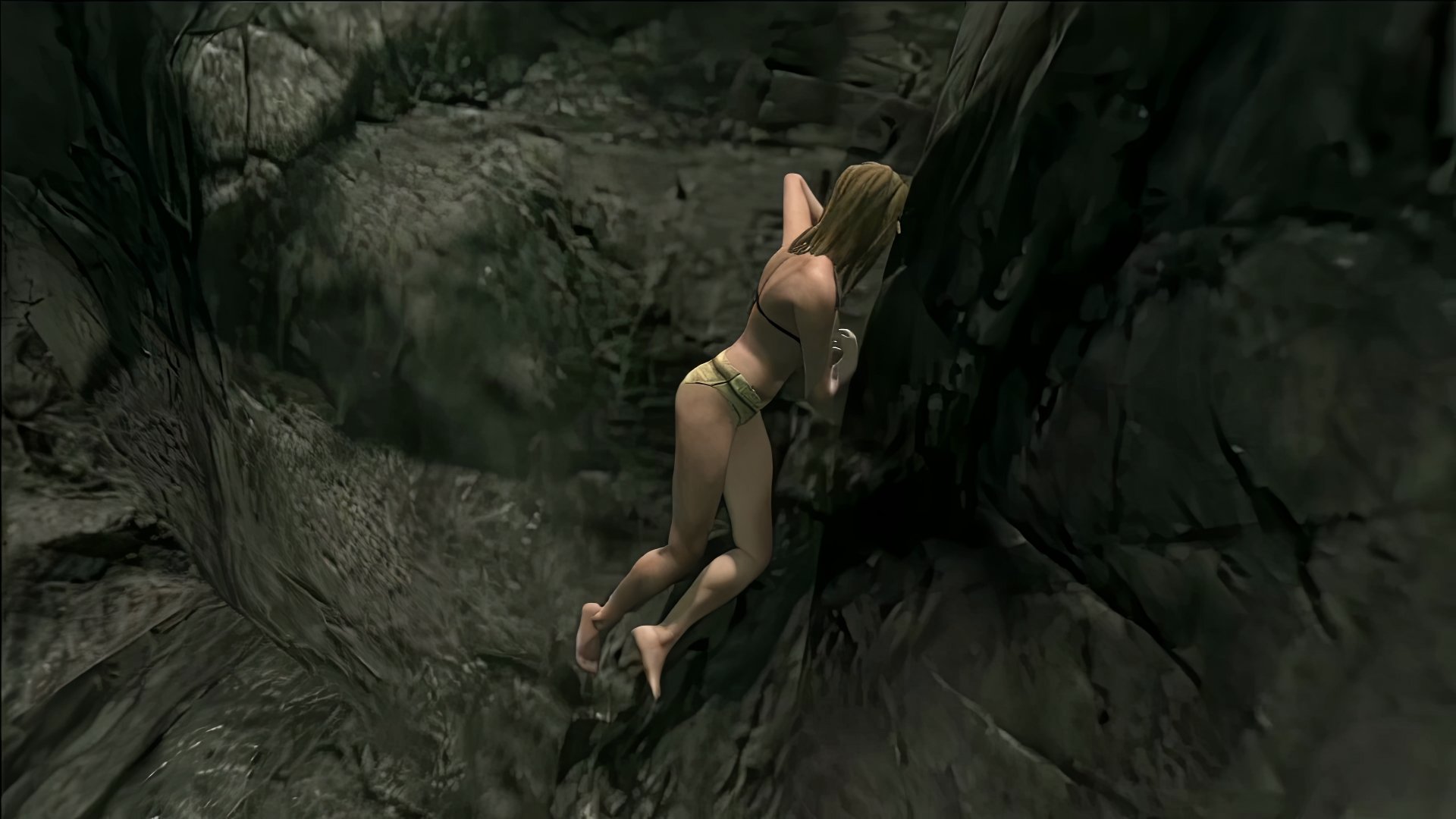VRAL is currently presenting Georgie Roxby Smith’s Blood Paintings as a single channel video. To fully appreciate the significance of this series, we will explore various artworks. Our discussion starts with Smith’s landmark 2012 in-game performance and machinima The Fall Girl.
Like an anxious dancer condemned to endless pirouettes, the female protagonist of Georgie Roxby Smith’s The Fall Girl spins helplessly down a bleak mountain passage in The Elder Scrolls V: Skyrim, contorted by an inadvertent “death glitch.” With her avatar locked in this ceaseless loop of hellish torture, Smith captures extended footage exposing the anguished animation frame-by-frame in its punishing inertia. She isolates this doom loop from surrounding gameplay, forcing viewers to confront imagery typically blinked past and easily forgotten.
Removed from context, this tableaux vivant sui generis betrays the ingrained misogyny encoded subtly into gaming worlds, worlds populated largely by male creators and players enacting adventures through the restrictive lens of a decidedly masculine gaze. Bug or intentional vignette, the isolated scene reduces Skyrim’s expansive questing freedom to the ruthless physics binding female characters: they must ultimately submit to situations, no matter how treacherous, tied to their prescribed femininity. It’s in the game! It’s codified! It is what it is!
In other words, the revolution we witness here is literal, or, rather physical: the female character is spinning on her axis, over and over again. This revolution as continual rotation leads to a revelation. Through this glitch excavation, Smith moves beyond the industry’s celebratory talk of interactivity as freedom, “abdication of authorship”, “co-creation” and “emergent” player stories, pervasive in fandom studies and game studies. Instead, recalling feminist film theory traditions, she confronts gaming technology’s uncanny knack for magnifying the most disturbing drives and assumptions underlying popular culture. Stuck in her deadly spin, The Fall Girl becomes less individual than archetype or trope, a sacrificial testament to the cyclical violence awaiting game heroines straying beyond plastic pedestals into masculine power fantasies.
Even Lara Croft, hailed once as groundbreaking virtual female representation, submitted to famously voyeuristic death scenes accentuating her hyper-sexualized physique rendered vulnerable, as both Miltos Manetas and Peggy Ahwesh remind us…
Matteo Bittanti
Works cited
Georgie Roxby Smith, The Fall Girl, in-game performance and machinima (color, sound, 8’ 07”), 2012.
This content is exclusive to Patreon subscribers. To gain full access, consider joining our vibrant community.







